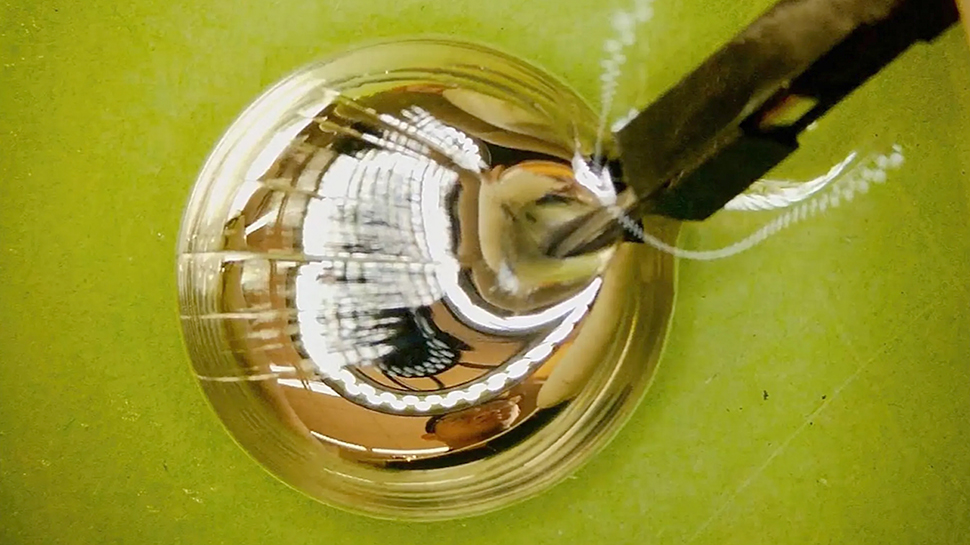Liquid metal RAM is first step towards shapeless computing — as well as spineless robots with octopus-like features and robots from a popular 90's Sci-Fi movie
Researchers have developed flexible memory that can withstand any deformation

Storage systems are critical parts of electronic devices, but current methods have struggled to create flexible memory due to inherent rigidity limitations.
In a breakthrough that brings to mind the T-1000 from Terminator 2, researchers from Tsinghua University in Beijing have developed a fully flexible resistive random-access-memory device, known as FlexRAM, using a gallium-based liquid metal (GLM) to write and read data.
This new liquid metal RAM, which can withstand nearly any deformation, uses reversible electrochemical oxidation to modulate the overall conductivity of the target liquid metals. Published in the journal Advanced Materials, the research details how GLM droplets undergo oxidation and reduction mechanisms in a solution environment that mimics the hyperpolarization and depolarization of neurons. This unique process allows the writing of 1s and 0s, with a low voltage oxidizing the liquid metal to represent “1” and a reverse voltage returning the metal to its low-resistance state of “0".
Wearable/implantable electronics
IEEE Spectrum reports that to demonstrate the functionality of FlexRAM, the team encoded a string of letters and numbers onto an array of eight FlexRAM storage units through a software-and-hardware setup. This array is equivalent to 1 byte of data information. The digital signal from the computer was converted into an analog one using pulse-width modulation to precisely control the oxidation and reduction of the liquid metal.
The GLM droplets are encased in Ecoflex, a stretchable biopolymer. The researchers used a 3D printer to create Ecoflex molds and injected the GLM droplets and a solution of polyvinyl acetate hydrogel separately into the cavities in the mold. This process increases the device's resistance ratio and prevents solution leakage.
The current prototype is a volatile memory, but has shown the ability to retain data for up to 12 hours even when the power is switched off. This feature, combined with its stable performance for over 3,500 cycles of operation, suggests that FlexRAM could be developed into different forms of memory.
The liquid metal RAM also demonstrated impressive stability, even under extreme deformations such as 100% stretching, 180° bending, and 360° twisting. This resilience hints at exciting possibilities for its use in future soft intelligent robots, brain-machine interface systems, and wearable/implantable electronics.
Sign up to the TechRadar Pro newsletter to get all the top news, opinion, features and guidance your business needs to succeed!
More from TechRadar Pro

Wayne Williams is a freelancer writing news for TechRadar Pro. He has been writing about computers, technology, and the web for 30 years. In that time he wrote for most of the UK’s PC magazines, and launched, edited and published a number of them too.